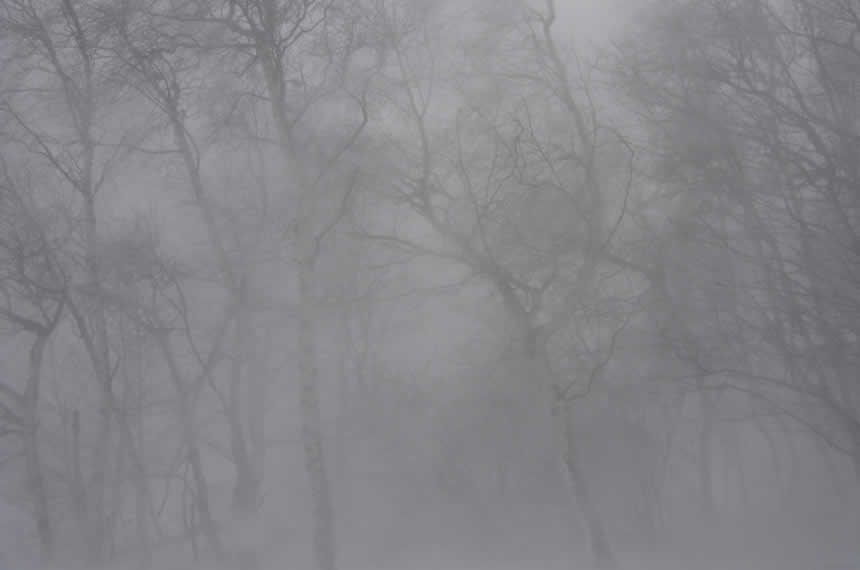Most people believe that a blizzard is characterized by immense amounts of snowfall, but that is not entirely true. While a large amount of snow must be present, the main factors in determining a blizzard from other snow events are wind speed and visibility. The official definition, according to the National Weather Service, is that a blizzard is defined as a storm that has wind speeds in excess of 35 miles per hour (mph) and visibility of less than a quarter (1/4) mile, and these conditions must last for at least 3 hours. The snow can either be falling as precipitation, which are the most common blizzards, or be present on the ground, which are known as ground blizzards.
Facts about Blizzards
- In 1899, a snowstorm struck areas of the deep south, including New Orleans and Tampa. Cities including Washington D.C. and Charlotte, North Carolina were hit hardest, with some areas receiving over 20 inches of snow.
- The most snow dumped by a snowstorm in the U.S. was recorded as 189 inches at Mount Shasta in California, in February of 1959.
What causes a Blizzard?
In general, blizzards occur when a mass of warmer air collides with a mass of very cold air. The cold air mass cuts under the warm air mass, and as the warm moist air rises upwards it forms snow. The collision of the air masses also provides the atmospheric tension required for high wind speeds. There are several ways in which these air mass collisions can occur.
In the United States, warm air masses from the Gulf of Mexico can collide with cold air masses from the Pacific. These collisions result in blizzards over the plains. The warm Gulf air masses can also collide with cold air from the Great Lakes, causing lake-effect blizzards over northeastern states. In Europe, low pressure systems from the Atlantic occasionally
Safety
Precautions
The most important safety measures people can take prior to and during a blizzard are to not attempt travel, stay indoors, and ensure that there are appropriate supplies of heat and food available. Automobile travel during a blizzard is exceptionally dangerous, due to the high winds, slick roads and low visibility. Automobile accidents are frequent during these events, and the potential for automobile drivers getting stranded is also high. When drivers do become stranded, the cold temperatures and windchills have the potential to cause frostbite and hypothermia, a condition in which the body is losing heat faster than it is replacing it. Symptoms of hypothermia include shivering, drowsiness and losing conciousness.
Another issue that often occurs during blizzards is power outages. As power gets knocked out by the wind, snow and breaking branches and trees, many people will attempt to use unsafe methods to heat their homes, such as grills. However, both charcoal and gas grills are unsafe methods to use to attempt to heat homes, charcoal grills create large amounts of smoke, and gas grills can cause carbon monoxide poisoning. It is extremely important for people to ensure that they have an appropriate method of heating available prior to a blizzard occuring, in the event their primary source of power is knocked out.
Inventions that improve Safety
Many inventions and developments over the last few centuries have together improved people’s ability to survive and to stay safe in a blizzard. Indoor heating systems create a warm living space where wood fireplaces were the standard one hundred and fifty years ago. In many areas, underground power lines have replaced above ground power lines, so that in a snowstorm people can continue to heat their homes and not have their electricity knocked out by the storm. One advancement that was necessary with the massive shift to automobiles, was for salt to be dispersed on snowy roads to prevent large amounts of ice from forming on them. This was first tested in the 1930s, and put into practice on a larger scale in the early 1940s. Finally, as weather prediction capabilities have substantially improved over time, people have gained the ability to gather food and supplies well before a blizzard arrives, so that they can stay safely off of roads when it does.
Blizzards in Literature, Film and Culture
- The movie ‘Storm of the Century’, starring Tim Daly and written by Stephen King, takes place on an island off of Maine during an extremely powerful blizzard.
- One of the most prominent video game production companies is named Blizzard.
- ‘The Snowstorm’ is a short story that was written by Aleksandr Pushkin in 1830 about two young starcrossed lovers that end up becoming ill when they attempt to elope.
- Chasse-Neige, which roughtly translates to Snowstorm, was written by Franz Liszt, and is the finale of the 12 Transcendental Études.
- Fans of the Minnesota Timberwolves, an NBA team located in Minneapolis, had originally voted to name the team the Minnesota Blizzard, but were overturned by the owners of the team.



